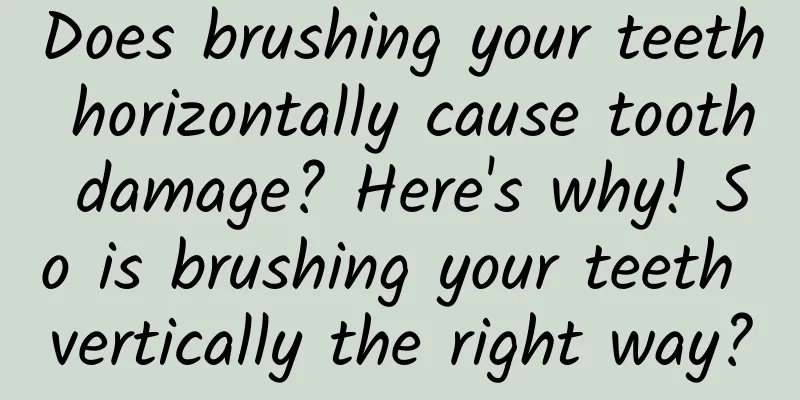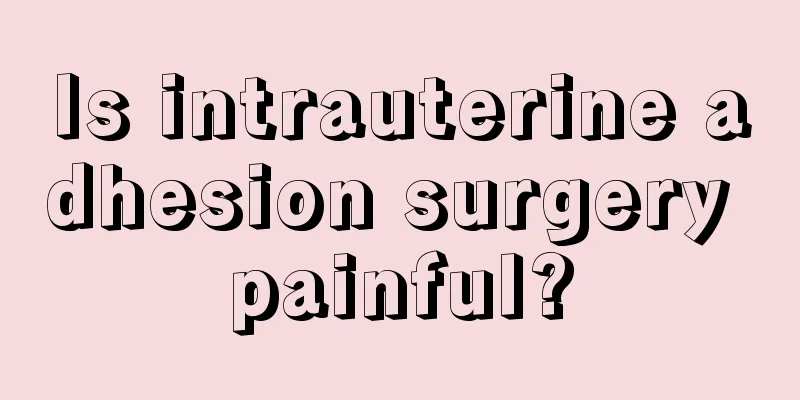Does brushing your teeth horizontally cause tooth damage? Here's why! So is brushing your teeth vertically the right way?

|
Recent A woman brushed her teeth horizontally for a long time. Causes teeth to become chipped #27-year-old woman's teeth damaged due to long-term horizontal brushing# The doctor diagnosed that Wedge-shaped defects caused by long-term horizontal brushing So What is a wedge-shaped defect? How is a wedge-shaped defect caused? When brushing your teeth, should you brush your teeth horizontally or vertically? How to prevent it scientifically? Let’s find out! What is a “wedge-shaped defect”? A wedge-shaped defect is a defect caused by the slow consumption of the hard tissues at the cervical and labial sides of the teeth. It is V-shaped and is called a wedge-shaped defect because it resembles a carpenter's wedge. Generally, the symptoms worsen with age and are more common among middle-aged and elderly people. Wedge-shaped defect Wedge-shaped defects can be divided into three categories according to the degree of the defect: shallow, moderate, and deep. They can also cause the following symptoms: tooth sensitivity, tooth pain, pulp inflammation, and gingival atrophy. How is a wedge-shaped defect caused? 1. Improper brushing This is the main reason for wedge-shaped defects, also known as tooth brushing wear. The reasons are: (1) Horizontal brushing is the most deadly Horizontal brushing is the main cause of wedge-shaped defects! People who use a hard toothbrush to brush horizontally for a long time often have typical and severe wedge-shaped defects. Canines and bicuspids at the corners of the mouth are also often the main affected areas. (2) Brushing Too Hard If you brush your teeth too hard, it may cause tooth tissue fracture, tooth defect, or wedge-shaped defect at the neck of the tooth, and may cause tooth sensitivity. According to statistics, men are more likely to have wedge-shaped defects than women, which may be a "side effect" of too much force. Therefore, we should brush our teeth gently. (3) Use a hard-bristled toothbrush It is difficult to clean the dental plaque between teeth and hidden surfaces with a hard-bristle brush, and the cleaning effect is not ideal. At the same time, a hard-bristle brush can easily scratch the gums, causing gum bleeding, and accelerate the exposure of the tooth roots and the formation of wedge-shaped defects. Therefore, it is recommended to choose a toothbrush with softer bristles. After brushing your teeth, rinse the toothbrush repeatedly with clean water, shake dry the bristles, and place the brush head upward in a ventilated place. 2. Structure of the tooth neck Disadvantages of tooth structure: The enamel-cementum junction at the neck of the tooth is the part with the least or no enamel and cementum coverage in the entire tooth. It is the weak link in the tooth structure. The gums are prone to inflammation and atrophy at this point, leading to exposed root surfaces. Therefore, this part has the lowest wear resistance and is easily subject to wear and defects. 3. Effect of acid The wedge-shaped defect is usually close to the gums, where there is a lot of saliva in the gingival sulcus. The saliva contains some acidic substances, which can corrode the teeth. In addition to the acid in the saliva, the acidic food you eat and the acid reflux from stomach problems can also corrode the teeth, causing defects in the neck of the teeth. 4. Stress concentration When an object is subjected to force, the force per unit cross-sectional area at any moment is called stress. Stress is the density of internal force on the cross-sectional area. When stress increases sharply, it is called stress concentration. The cervical area on the labial and buccal side of the tooth is the stress concentration area of the bite force. Long-term excessive chewing force and a love of biting hard objects will cause fatigue of tooth tissues, resulting in damage in the stress concentration area, which will increase the probability of defects. In summary, it is generally believed that wedge-shaped defects are the result of the combined action of multiple factors. How to treat wedge-shaped defects? 1. For wedge-shaped defects with very small loss and no symptoms, you only need to change your brushing method and no treatment is necessary. 2. Although the defect is small, if the teeth are still sensitive to cold and heat, desensitization treatment can be used with desensitizers on the basis of changing the brushing method. 3. Patients with larger defects need filling or root canal treatment depending on the situation . Of course, maintaining good brushing habits after treatment is also essential. It is recommended to use the Bass brushing method It is recommended not to brush your teeth just horizontally or vertically. The Bass method is recommended, using a toothbrush with softer bristles and brushing for no less than 3 minutes. Bass brushing method Place the brush head on the neck of the tooth, with the bristles at a 45° angle to the long axis of the tooth; Just apply gentle pressure, don't use too much force, and make sure part of the bristles are in the gingival sulcus and part of them are on the gums; 2-3 teeth form a group, starting from the buccal side of the posterior teeth; Brush the same area back and forth several times with short horizontal vibrations; Rotate the toothbrush toward the crown and brush the cheek surface. This completes a set. 2. Adjust your eating habits Acidic foods can cause demineralization of the tooth neck tissue, which is prone to wedge-shaped defects when rubbed. You should try to reduce the intake of acidic foods and avoid biting hard foods with your front teeth. 3. Treat digestive system related diseases Diseases such as gastroesophageal reflux disease can create an acidic environment in the mouth, causing certain damage to the teeth. If there are any digestive system-related diseases, they should be actively treated. 4. Correct bad biting habits If the teeth are not aligned properly and affect the bite, the bite needs to be adjusted to eliminate the high tooth tips and sharp edges. |
Recommend
How to relieve bloating during nighttime sleep in pregnant women
Pregnant women should pay special attention to th...
What should women do if their pelvic floor is loose?
Pelvic floor relaxation is the most common proble...
Frequent fetal movements at 26 weeks of pregnancy
The process of pregnancy is a particularly diffic...
Is subacute thyroiditis related to colds? Can it heal on its own without treatment?
Author: Wei Junping, Chief Physician, Guang'a...
After “Yang Kang”, you need to pay attention to these things!
How to use medicine scientifically after infectio...
Can salmon be eaten raw? What is the nutritional difference between raw and cooked salmon?
Farmed salmon and Norwegian salmon contain mineral...
How to abort a baby at 15 days of pregnancy
Pregnancy is a great joy. But without advance pre...
Introduction to the treatment of vaginitis
In fact, I believe everyone is familiar with vagi...
Spectrum treatment for cervical erosion
What is the use of spectrometer in treating cervi...
Three major "fashions" take away the iron in women's bodies
Today's white-collar women pay attention to f...
Why do I have stomach pain on the fifth day after abortion?
If the pain becomes more severe on the fifth day ...
How to increase estrogen in girls
Low estrogen levels in women are very detrimental...
Details determine the fullness and firmness of women's breasts
Having an angelic face and a devilish figure has ...
Light pink discharge during ovulation
The prerequisite for calculating the ovulation pe...
How to fry fish without peeling and without sticking to the pan? What are the tips for frying fish?
We all know that fish is a common food. It contai...









